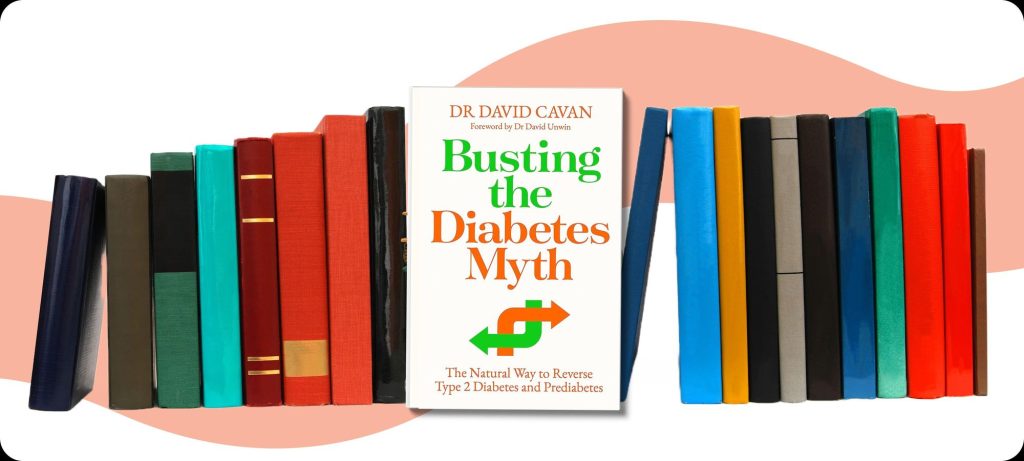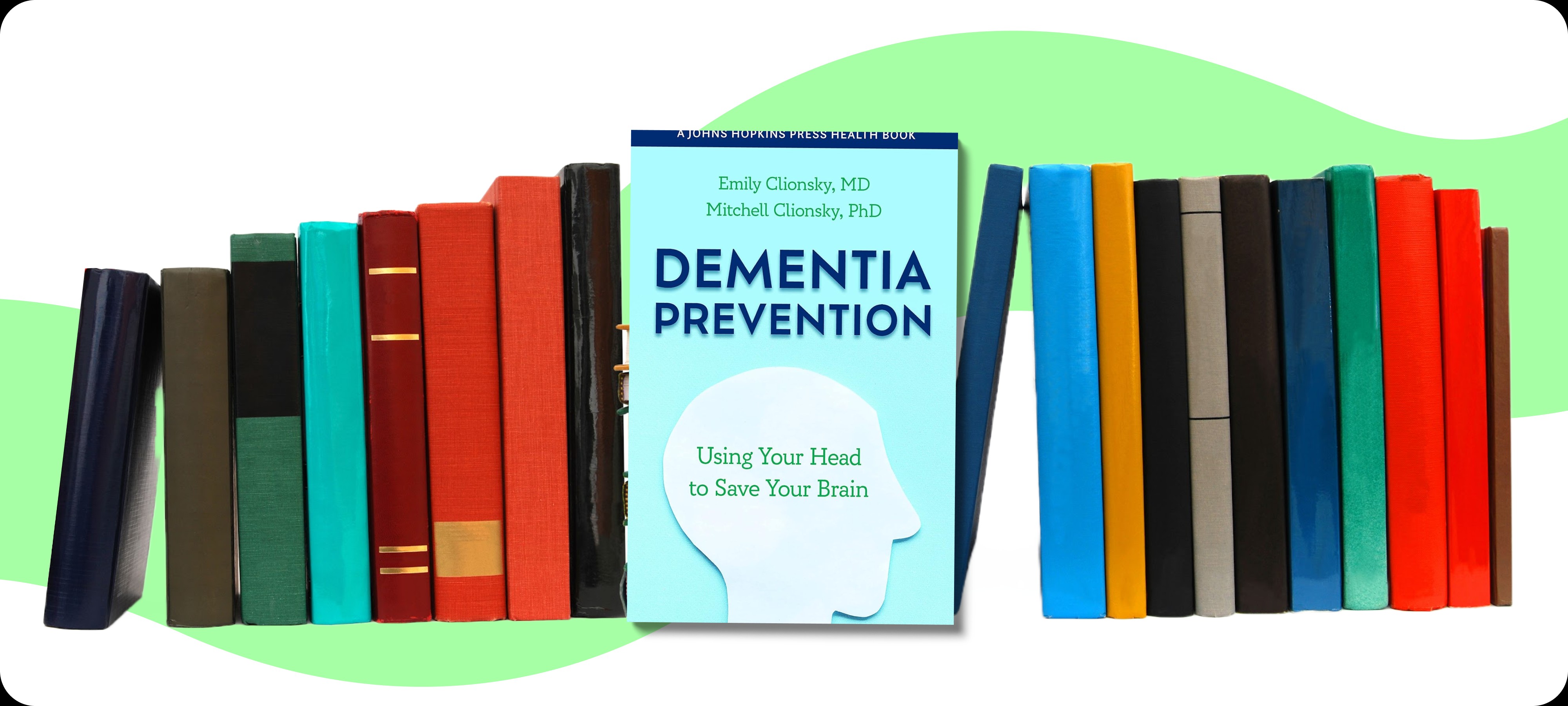“The first book of its kind to include specific advice for people living with prediabetes as well as those diagnosed with type 2 diabetes.”
Unfortunately, type 2 diabetes is truly a 21st-century plague. It is affecting the lives of 422 million people. Besides being widely spread and well-known, a plethora of myths surrounds the disease.
What are the real causes of diabetes? Is there any way to reverse it besides medications? Is prediabetes a straight-forward sentence to diabetes?
To answer all these questions and dispel all the myths, renowned physician Dr. David Cavan has written a book ‘Busting the Diabetes Myth’ – an in-depth read that aims to enable anyone to reverse their diabetes using simple lifestyle changes.
Author’s background

Dr. David Cavan is a knowledgeable diabetes physician specialising in all aspects of diabetes management, with a specific focus on helping individuals manage and even reverse type 2 diabetes through lifestyle changes.

He is a strong advocate for self-management and has actively contributed to the creation of educational programs for individuals living with diabetes. In addition to his clinical practice, Dr. Cavan engages in public speaking engagements and writes books on the topic. One of his notable works is ‘Reverse Your Diabetes Diet’.
What is the book about?

‘Busting the Diabetes Myth’ offers a comprehensive and evidence-based approach to guide individuals with type 2 diabetes and prediabetes towards a healthier future. Drawing upon Dr. Cavan’s extensive research and professional experience, this book presents the latest scientific evidence supporting his innovative methods for reversing diabetes.
The book starts with the chapter ‘You CAN do it’ which introduces readers to the topic of reversibility of diabetes. It explains in straightforward terms how modern lifestyles contribute to the development of these conditions.
The further chapters deal with myths that surround the disease. In simple words, backed with scientific research and parers, Dr. Cavan debunks myths like diabetes being solely caused by laziness and overeating, the irreversibility of type 2 diabetes and prediabetes, the non-existence of a diabetic diet and others.
The book provides direct guidance on what to do to reverse the disease. Readers can stumble upon them in the text of a chapter, however, the main action points are often listed at the end of a chapter.
The book also includes personal stories of Dr. Cavan’s patients. They are usually placed at the very end of chapters. Not only do these stories make the reading more enjoyable, but encourage readers to try the diabetes-reversing strategies themselves.
Key takeaways from ‘Busting the Diabetes Myth’

1Diabetes is not solely your fault
One of the most important myths that are debunked in the book is “You have diabetes because you are lazy and eat too much.”
Type 2 diabetes and prediabetes are prevalent worldwide and are not solely the result of individual laziness or overeating. The significant increase in the number of people affected by these conditions cannot be attributed to infections or genetic diseases. Instead, the author points to external factors in people’s lives that have impacted their metabolism. Understanding the rise of diabetes requires considering broader environmental and lifestyle influences rather than blaming individuals.
2Prediabetes can be reversed before it turns into diabetes
The book invalidates the myth that prediabetes inevitably leads to type 2 diabetes and requires escalating medication.
Both prediabetes and type 2 diabetes can be reversed through lifestyle changes. Studies have shown that adopting a low-fat, high-fibre diet, increasing physical activity, and achieving weight loss significantly reduce the risk of developing type 2 diabetes.
The Diabetes Prevention Program and the Finnish Diabetes Prevention Study demonstrated that lifestyle interventions were more effective than medication in preventing diabetes. Furthermore, individuals with prediabetes have successfully reversed their condition through lifestyle modifications, indicating that prediabetes is not an irreversible process. Reversing prediabetes is achievable, and early identification provides an opportunity to proactively improve health and minimise the risk of developing diabetes.
3Skipping snacks leads to a lower sugar intake
Cutting down on added sugar is crucial for managing and reversing diabetes and this can be achieved by eradicating the snacking habit.
Snacking, in general, is often driven by marketing and the food industry’s influence, encouraging excessive consumption of processed and sugary snacks. To reduce sugar intake, focus on eating enough during main meals and avoid snacking between meals. By doing so, you can reduce blood glucose and insulin levels, leading to decreased hunger and a lower desire to snack.
It’s important to have healthier snack options available when you feel peckish, such as cheese, fruits, vegetables, nuts, boiled eggs, or dark chocolate. However, it’s best to avoid sweet snacks that may trigger cravings and lead to overeating. Understanding the carbohydrate content of foods can help make informed choices and manage sugar intake effectively.
Table of contents

- Foreword
- Preface
- PART ONE Introduction
- CHAPTER 1 You CAN do it
- CHAPTER 2 What are prediabetes and type 2 diabetes?
- CHAPTER 3 The implications of a diagnosis of type 2 diabetes
- PART TWO Busting the myths
- CHAPTER 4 Diabetes is not your fault
- CHAPTER 5 Prediabetes and type 2 diabetes can be reversed
- CHAPTER 6 There is such a thing as a ‘diabetic diet’
- CHAPTER 7 You can eat cheese
- CHAPTER 8 Do test your blood glucose levels
- CHAPTER 9 Exercise is not the answer
- CHAPTER 10 You do not need to eat breakfast
- PART THREE Helping you on your way
- CHAPTER 11 Step by step towards your new way of eating
- CHAPTER 12 Making changes and sticking to them
- CHAPTER 13 The role of medication
- CHAPTER 14 Looking after your mental health
- CHAPTER 15 Situations that require special attention: illness, stress and pregnancy
- CHAPTER 16 The importance of regular health checks
- CHAPTER 17 Getting support
- CHAPTER 18 Be inspired
- CHAPTER 19 Achieving your goals and celebrating your successes
- PART FOUR Recipes About the recipes
- Eggs
- Soups
- Takeaways
- Family meals
- Desserts
- Appendix A – Useful websites and further reading
- Appendix B – BMI chart
- Endnotes
- Acknowledgements
- Index
Overall rating & strengths and weaknesses, according to readers’ reviews

Strengths
Scientifically backed.
Shares the latest research on diabetes and dispels old beliefs.
Gives practical recommendations.
Has a relatable and engaging writing style.
Motivates and encourages to try out diabetes-reversing strategies via real-life examples.
Weaknesses
Limited focus on specific dietary restrictions. While the book provides guidance on managing type 2 diabetes through lifestyle changes, it may not address the specific dietary restrictions of individuals with other conditions, such as IBS. Some readers with dietary restrictions may find the recipes and food recommendations less applicable to their unique needs.
Best quotes from ‘Busting the Diabetes Myth’

“…if you have type 2 diabetes, I recommend you obtain some means of assessing your glucose control – just not urine testing – as this will be enormously helpful in guiding your food choices, as you make changes to your diet. It is also hugely rewarding and motivating to see levels come down as a result of your efforts. However, it is not absolutely essential, and it is still possible to reverse your diabetes or prediabetes without monitoring your glucose levels.“
“Snacks are an invention of the food industry, and they pour hundreds of millions of pounds into developing and advertising them to us. Whereas in the past, parents would tell children not to snack as it will ‘spoil your appetite’, now the all-pervasive messaging that comes through marketing encourages everyone to get through tonnes and tonnes of snacks, many of which are ultra-processed and high in sugar. So, I encourage you to focus on eating enough at your main meals to fill you up, and then aim to avoid any food between meals.“
“When it comes to main meals, my simple advice is to think of ‘meat and two veg’ type meals rather than meals based on potatoes, pasta or rice. Perhaps, more accurately, ‘protein and as many veg as you can manage’ would be a better description – one that includes meals for non-meat eaters and encourages you to pile your plate up with as many veg as you like.“
Final takeaway

‘Busting the Diabetes Myth’ by Dr. David Cavan offers a valuable resource for individuals newly diagnosed with type 2 diabetes or prediabetes. With its scientifically backed approach and practical recommendations, the book empowers readers to take control of their health and challenges common misconceptions surrounding diabetes.
With its focus on debunking myths, providing practical guidance, and sharing real-life examples, ‘Busting the Diabetes Myth’ is best suited for individuals seeking a comprehensive introduction to type 2 diabetes and prediabetes management. It serves as a valuable resource for those who want to understand the underlying causes of diabetes, make informed choices about their diet and lifestyle, and embrace self-management as a key aspect of their health journey.
Where to buy
You may purchase ‘Busting the Diabetes Myth‘ on Amazon at the best price. It is available in Kindle and paperback versions, so you are free to choose the format that suits you best.
Receive Exclusive Tips & Weekly Digest – subscribe to our newsletter







